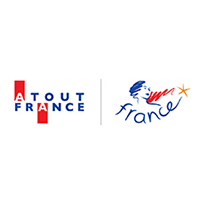Thailand
During your stay in Chiang Mai, make sure to visit Doi Suthep Pui Mountain. Its pleasant climate, stunning waterfalls, and golden sanctuary perched atop it make it a renowned tourist destination.
Mountain forests, deep ravines, terraced rice fields—the surroundings of Chiang Mai are worth exploring if you enjoy eco-tourism. Just a dozen kilometers north of the city stands Doi Suthep Pui Mountain. It beautifully overlooks the deciduous vegetation of the understory, occasionally visited by wild boars and Indian muntjacs. Locals know this place as Doi Aoy Chang. A day of adventure awaits you in Doi Suthep Pui National Park: mountain climbing, cycling, camping, outdoor dining, and discovering magnificent waterfalls. Be sure to bring a change of clothes. You'll need to swap your shorts and tight-fitting clothes for something more formal if you wish to enter Wat Phra Doi Suthep and see its emerald Buddha.
Fauna and Flora of the Park
Doi Suthep Pui National Park is a wildlife sanctuary where animals reign supreme and humans are honored guests. Buddhist monk Sudeva is an exception to this rule, having spent countless years wandering these forests. Common species from Southeast Asia inhabit the park: Asiatic black bear, Temminck's cat (a feline less imposing than a lion or lynx but three times larger than a domestic cat), barking deer, muntjac, Assam macaque, and more. The birdlife is remarkably diverse. A dense forest provides a safe haven for these animals, consisting mainly of oaks, herbaceous and arborescent ferns, dipterocarps, and countless varieties of magnolias.
Planning a visit to Doi Suthep Pui National Park
The park is located on the outskirts of Chiang Mai, approximately 13 km from the city center, accessible via Huay Kaew Road, passing through the Maya Mall shopping center. If you're not familiar with Chiang Mai's streets, it's best to hire a driver. Alternatively, you can reach Wat Phra That Doi Suthep by songthaew.
The park can be visited year-round. The climate is generally mild, akin to an eternal spring in these high mountains. Avoid visiting between July and September if you're concerned about rain showers.
Things to see and do
Most attractions are concentrated in the western section, where the visitor center is located. Notable peaks for climbing include Doi Buak Ha and Doi Pui.
Wat Phra That Doi Suthep
A key attraction in the park, frequented by Theravada Buddhists, Wat Phra That Doi Suthep, also known as the Golden Mountain Sanctuary, features a 14th-century stupa resembling a bell tower, a replica of the emerald Buddha, and an image of Ganesha with an elephant head, the Hindu god of music. The staircase leading to the sanctuary has around 300 steps. Hikers can stretch their legs and enjoy panoramic views and photo opportunities. For those who prefer not to walk, a cable car is available for a fee of 30 baht.
Bhubing Palace
Don't miss Bhubing Palace and its well-maintained, landscaped garden. Completed in the early 1960s, it serves as a residence for members of the royal family during their winter stays in Chiang Mai. The palace is open to visitors except when occupied by the royal family.
Huay Kaew Waterfall
This small waterfall is a short walk from the main road. There's nothing to do here but enjoy the fresh air and watch birds and butterflies.
Dtaat Mook Waterfall
A guide is required to hike the 7-kilometer trail to Dtaat Mook Waterfall. At the trailhead, take a moment to admire the gold-plated Buddha idol overlooking Huay Tong Tao Dam.
Mok Fah Waterfall
A visit to Doi Suthep Pui isn't complete without a hike to the majestic Mok Fah Waterfall. Emerging from a stone cliff, it splits into two torrents of water flowing into a natural basin surrounded by mosses and ferns. In winter, many swimmers paddle in its crystalline waters. The waterfall is located in the northern part of the park, about ten kilometers from the headquarters. The road leading there is relatively drivable, but the last kilometer must be covered on foot.
Practical information
Park entrance fees:
200 baht per person, half-price for children accompanied by an adult. Additional fees apply for camping, lodge accommodation, or visiting Wat Phra That Doi Suthep.
Opening hours:
The park is open daily from 8:30 a.m. to 4 p.m. Note that some trails may be impassable during the rainy season from July to September.
Accommodations and dining
Camping facilities are available onsite for those who wish to spend a night and experience the wilderness. Yod Doi Pui Campground near Bhubing Palace and Mon Tha Than Waterfall Campground are noteworthy options. Tents, flashlights, and sleeping bags are provided. For those preferring a roof over their heads, the park headquarters offers moderately priced bungalows.
Nearby attractions
Have you enjoyed your trip to Doi Suthep Pui? On your way down the mountain, consider visiting other natural sites, such as:
- Buatong Waterfall, located an hour and a half's drive from Chiang Mai;
- The picturesque mountain village of Mae Rim.

